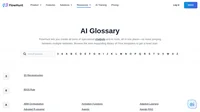Transfer Learning is a powerful technique in the field of Artificial Intelligence (AI) and Machine Learning (ML). It involves taking a pre-trained model that was developed for a particular task and adapting it to perform a new, but related, task. This method leverages the knowledge that the model has already gained from the initial task to improve its performance on the new task, even when data for the new task is limited.
Why is Transfer Learning Important?
Limited Data
In many real-world scenarios, obtaining large amounts of labeled data can be difficult and expensive. Transfer learning allows us to leverage pre-trained models, reducing the need for extensive data collection.
Improved Performance
Starting with a pre-trained model often leads to better performance on new tasks more quickly. This is especially useful in applications where high accuracy is crucial.
Time and Cost Efficiency
Transfer learning saves time and resources as it speeds up the training process. Instead of training a new model from scratch, we can fine-tune an existing model.
Adaptability
Models trained on one task can be adapted to perform well on related tasks. This adaptability makes transfer learning suitable for a wide range of applications, from image recognition to natural language processing.
How Does Transfer Learning Work?
Pre-trained Model
The process begins with a model that has been previously trained on a large dataset for a specific task, like image recognition or text analysis. This model has already learned general features and patterns that are useful for various related tasks.
Base Model
This pre-trained model serves as the “base model.” It consists of multiple layers that have learned to identify hierarchical features from the input data.
Transfer Layers
Next, we identify layers in the pre-trained model that capture generic information relevant to both the old and the new tasks. These layers are usually closer to the input layer and are capable of learning low-level features.
Fine-tuning
The selected layers are then fine-tuned using the dataset for the new task. This process involves retraining these layers to adapt to the specific requirements of the new task while retaining the knowledge from the pre-trained model.
Benefits of Transfer Learning
Enhanced Efficiency
Training ML models from scratch requires a significant amount of time and computational resources. Transfer learning accelerates this process by utilizing a pre-trained model, allowing new tasks to be completed faster and with fewer resources.
Increased Accessibility
Building deep learning models often demands large datasets, extensive resources, and significant computing power. Transfer learning makes advanced AI more accessible by enabling organizations to adapt existing models to new tasks at a fraction of the cost.
Improved Performance
Models developed through transfer learning tend to be more robust and adaptable to diverse and challenging environments. They handle real-world variability and noise better, resulting in improved performance in practical applications.
Different Transfer Learning Strategies
Transductive Transfer Learning
In this strategy, the source and target tasks are the same but the domains differ. For example, adapting a sentiment analysis model trained on movie reviews to analyze product reviews.
Inductive Transfer Learning
Here, the source and target tasks are different but related. For instance, using a model trained for image classification to perform object detection.
Domain Adaptation
This involves adapting a model to a new domain with limited labeled data. For example, training a speech recognition model on American English and adapting it for British English.
Multi-task Learning
In this approach, the model is trained on multiple tasks simultaneously, improving its generalization capabilities. For example, a model trained to recognize both objects and scenes in images.



